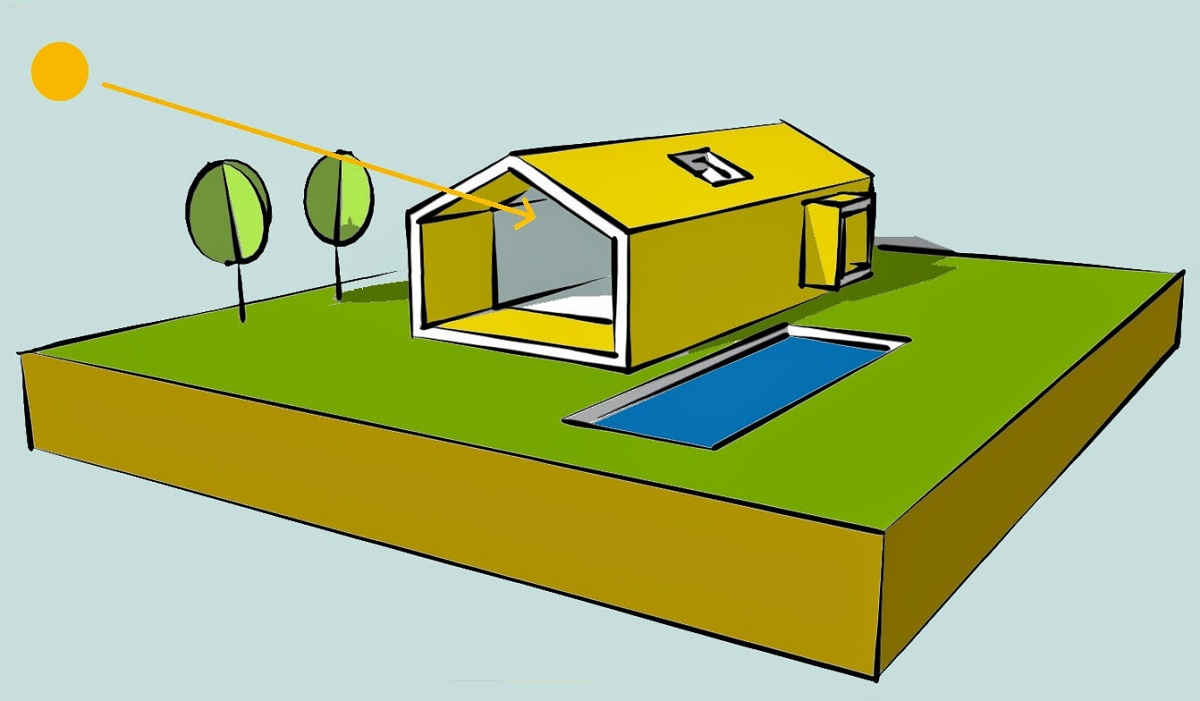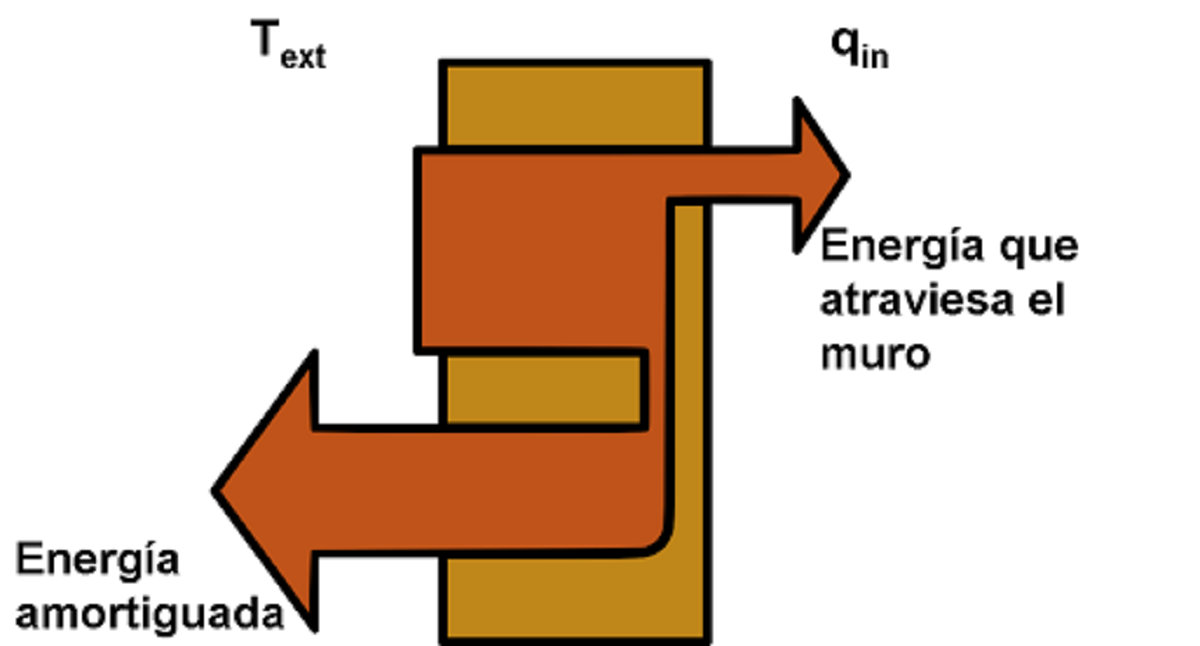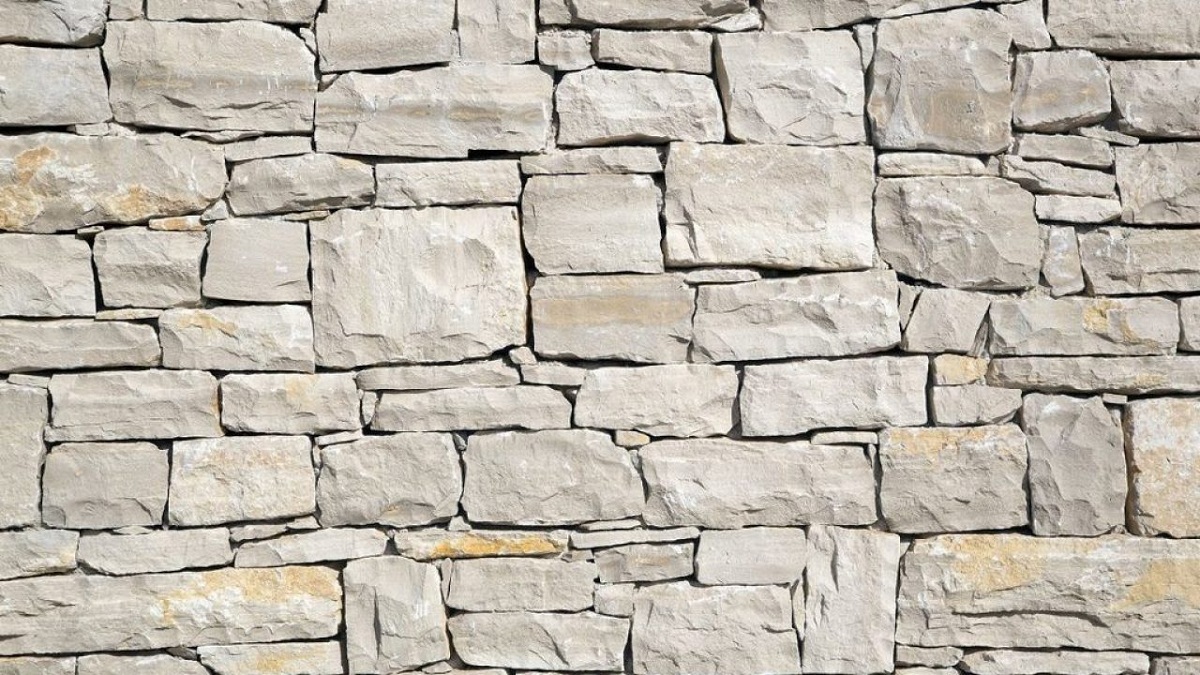
La thermal inertia It is a characteristic of a material, it tells us how much heat an object can contain and at what speed it generates or retains heat. Translated into a building, we can immediately infer that it is as if the mass of a house gradually absorbs energy and releases it over time.
In this article we are going to tell you everything you need to know about thermal energy, its application in construction and its importance.
What is thermal inertia

Thermal inertia is the ability of a certain element to store the received thermal energy (heat), conserve it and gradually release it. The energy storage capacity of a material depends on its quality, density and specific heat.
The thermal inertia of the materials used in the building makes it possible to maintain the most stable temperature throughout the day in a habitable interior space. In summer, materials with high thermal inertia absorb heat during the day, and due to the difference in temperature between indoor and outdoor environments, they are gradually stored and dissipated at night (heat lag of several hours). The next morning, the material lowers its temperature and begins to circulate again: absorbs heat during the day and emits heat at night.
Key features

For decades, our country has not considered this (brick boom), and our buildings can basically be reduced to facing bricks and isolation rooms. It is today when the characteristics of the materials are considered again to improve the efficiency of the construction. Buildings that absorb heat during the day and provide heat at night require less energy to heat and cool.
In Spain, since the code building technical entered into force in 2006 and was revised in 2013, certain types of buildings must take advantage of this characteristic of the material.
Importance of thermal inertia in construction
When we currently use approved procedures (CE3X, CE3, or HULC) to calculate energy ratings, we must consider the building envelope. Here we can see something like "the skin of a building." The skin of the building will be the roof, the facade, the windowsill, etc.
This "skin" of the building must be defined as precisely as possible in the program, because the technician enters the program according to the characteristics of the material, reads its extensive database, interprets the different thermal inertias of the material, and translates it into data of heat transfer.
For them, when a technician makes an energy certificate, they will introduce the enclosure in three different ways:
- Default: When the technician enters the shell data, due to lack of experience or ignorance, he selects the "default" option, the program will know a certain shape according to the construction date, and it will become heat transfer. The problem with entering data this way is that we "minimize" and the score may be lower than the score we get when we use one of the other methods.
- Dear: By entering the data as an "estimate", the program will guide us and explain the content of the heat transfer. Based on some questions, such as the construction date of the house, we think it is insulating, etc. It will give heat transfer data.
- Known: This will always be the best way to enter the data of the enclosures in the programs. We can form the enclosure, gradually introducing the layers (from the outside to the inside).
Isolation mechanisms
It is often said that the properties of good insulating materials in the home will be mentioned, those things that protect us from the cold in winter, but how do we effectively prevent heat stroke and chilling? The hot summer of mid-August makes us feel the importance of protecting ourselves from overheating in the house, making us feel comfortable without wasting cooling energy.
Especially in the space below deck, the selection of heat-insulating materials with suitable characteristics and known effects on the structure, such as the arrangement and size of windows, ventilated facades and roofs, and air tightness, are of particular importance.
It is a passive mechanism, which takes advantage of the temperature difference between the construction element and its surroundings, dampens thermal differences making them more stable and delays heat transmissions (time lag) to achieve greater thermal comfort inside.
This concept of thermal inertia is key in climates with significant daily thermal fluctuations to achieve one of the most important objectives in a home: thermal stability; that the temperature varies very slightly and does not consume an excess of energy for its maintenance.
Wood to improve thermal inertia
Wood is the building material with the highest specific heat capacity, 2100J / kg, and at the same time it has high density and low thermal conductivity. Its natural characteristics make natural wood fiber insulators a material with a high capacity to store thermal mass: they have a high thermal inertia, which ensures very low fluctuations in internal temperature, which is an area where the external temperature presents a big change between day and night
For example, if 180mm fiberboard is used to conserve heat, the lag time (delay) for heat absorption and dissipation reaches 10 hours. As shown in the figure below, the outdoor air temperature fluctuates at 21ºC and the indoor air fluctuates at 3ºC (damping coefficient = 7).
In addition to their high thermal inertia, wood fiber insulators are open to vapor diffusion (μ value = 3) and adjust the humidity of the air by absorbing or expelling air, depending on the ambient conditions of the room, up to 20% of its weight in a humid environment without losing its insulating capacity. The combination of these two characteristics has a positive impact on the environmental conditions of the room.
I hope that with this information you can learn more about thermal energy, its characteristics and its obligation in the field of construction.
